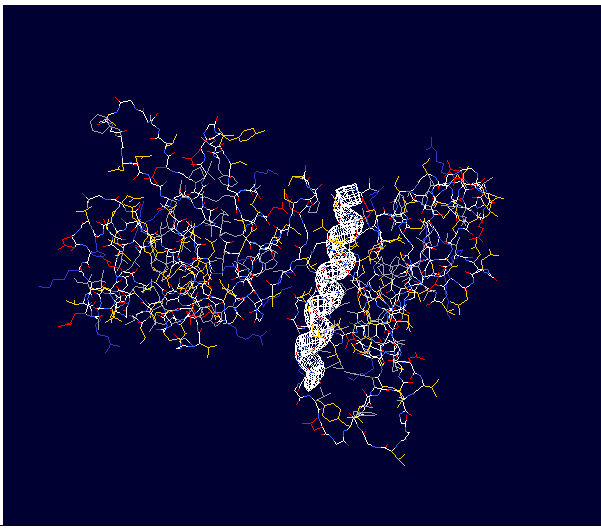Pilin
From Proteopedia
(Difference between revisions)
| Line 4: | Line 4: | ||
<br> | <br> | ||
| + | ==Indtroduction== | ||
| + | Type IV pili play an important role in the pathogenesis of many bacterial species; they are a required component for the adhesion of the bacteria to their target cells. Similarly, the type IVb pilus of ''Salmonella typhi'' is the adhesion factor that allows the pathogen to enter into the gastrointestinal cells of animals <ref name=journal1>PMID:19626704</ref>. They may also mediate transformation, modulate target-cell specificity and play a role in twitching motility <ref name=journal2>PMID:PMC2225195</ref>. | ||
| + | |||
==Structure== | ==Structure== | ||
| - | + | ||
[[Image:N_Teeerminal_Hydrophobic.png|alt text]] | [[Image:N_Teeerminal_Hydrophobic.png|alt text]] | ||
| - | + | ||
| + | |||
| + | ==Function== | ||
| + | |||
| + | |||
| + | |||
| + | |||
| + | |||
Revision as of 22:49, 25 March 2010
Contents |
Salmonella typhi type IVb pilin (PilS)
Indtroduction
Type IV pili play an important role in the pathogenesis of many bacterial species; they are a required component for the adhesion of the bacteria to their target cells. Similarly, the type IVb pilus of Salmonella typhi is the adhesion factor that allows the pathogen to enter into the gastrointestinal cells of animals [1]. They may also mediate transformation, modulate target-cell specificity and play a role in twitching motility [2].
Structure
Function
References
- ↑ Balakrishna AM, Saxena AM, Mok HY, Swaminathan K. Structural basis of typhoid: Salmonella typhi type IVb pilin (PilS) and cystic fibrosis transmembrane conductance regulator interaction. Proteins. 2009 Nov 1;77(2):253-61. PMID:19626704 doi:10.1002/prot.22500
- ↑ PMID:PMC2225195
Proteopedia Page Contributors and Editors (what is this?)
Michal Harel, Elyse Yaremco, David Canner, Andrea Gorrell, Alexander Berchansky

